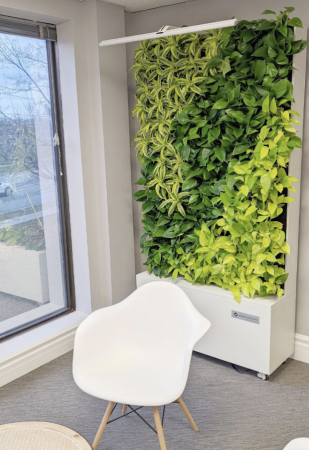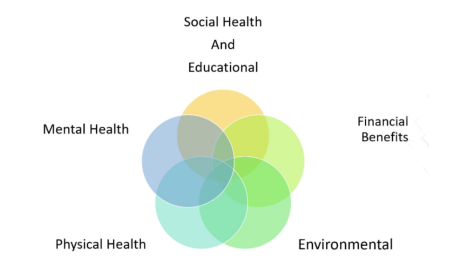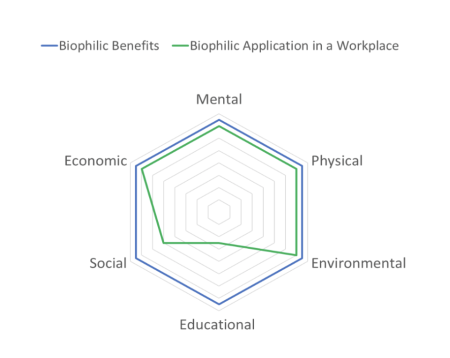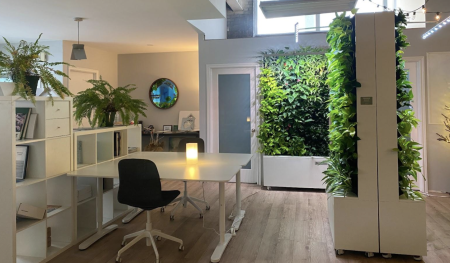Biophilic Design Applications into the Office Environment
- January 26th, 2023
- Biophilic Design
What is Biophilic Design
Biophilic design is the art of integrating nature into the built environment in order to improve human well-being and yield environmental benefits.
Employees spend at least 8 hours a day in an office or other confined workspace. Working in a biophilic office environment nourishes employees’ physical and mental health in many ways. Such as reducing airborne pollutants and creating a calming atmosphere, among several others.
Benefits of a Biophilic Office Workspace
Biophilic design encompasses benefits for human health as well as for environmental sustainability and business productivity.
Indoor air quality can be impacted by printers and copy machines that emit toner particles and toxic gasses such as ozone, nitrogen dioxide and other volatile organic compounds (VOCs). From coughing and minor throat irritation to dizziness and respiratory damage, such pollutants can cause both short and long-term impacts on employees’ health. Having plants and green walls in the office can improve air quality by removing airborne pollutants, reducing indoor CO2 and producing oxygen.

A mobile green wall integration into the lobby of an office
Biophilic elements can also act as noise buffers and cultivate a serene atmosphere, leading to elevated mood and lower stress levels, improved concentration and overall better performance on the job1.
Creating work environments that employees enjoy and thrive in yields better employee morale and retention and attracts more potential workers – a win for employers looking to build a reliable team. Biophilic benefits in an office setting include but are not limited to, the mental, physical, and social health of employees, which lead to financial benefits for employers, create educational opportunities and improve the internal environmental condition of the office.

Holistic Health Factors in the Workplace with Biophilic Design
In fact, biophilic office environments can increase productivity by 6% -20% 2. More than 90% of operational costs are linked to human resources, and financial losses due to absenteeism and presentism account for 4% of this cost3.
Applying Biophilic Design to the Office
Biophilic design has many applications that could be used directly or indirectly. Direct applications refer to the direct use of natural elements in space. Incorporating green walls, plants, water features, natural light and other natural elements into the workspace are some direct applications of biophilic design4.
The indirect application of biophilic design refers to the aesthetic aspects of nature. Using natural colours, pictures and materials are examples of indirect biophilic applications5. While it has been proved that direct application is more impactful on human health and wellness, designers implement indirect applications in cases where a direct application is not feasible.
Biophilic Design Benefits in the Office Environment
The diagram below reflects the application of biophilic design in a small to midsize office environment with a focus on the mental and physical health of employees. Giving individuals the positive feelings of being around nature improves workspace satisfaction, their physical health and productivity, consequently save money for the employer.

Benefits of the Wellness Space and Biophilic Design Integration into the Office Environment, a case study
In this case study, planters and mobile green walls have been used as dividers for ensuring social distancing, reducing stress and improving health conditions (Mental, Physical and Environmental). These green spaces can also serve as social areas for employee interaction. Or give employees the opportunity to exercise their green thumb and help with plant care if they like (Social and Educational).

A few mobile green walls and potted plants in the office. Used to serve biophilic impact as well as create social distancing in the office environment
Offering a Wellness Room to Employees
A wellness room is a designated space where employees can de-stress and focus on their mental and physical well-being. Incorporating biophilic elements into a wellness room will create a sense of serenity for employees resulting in reinvigoration when they return to work. Providing workout opportunities and healthy snacks and incorporating natural elements in the recharge room could answer the different needs of employees.
Amid the COVID-19 pandemic, New York’s Mount Sinai Hospital built wellness rooms for their healthcare workers to ‘recharge’ after working long hours in a stressful environment6. Healthcare workers reported a 60% decrease in stress levels after spending 15 minutes in these nature-inspired relaxation spaces.7
Benefits of Wellness Rooms
Enhancing employee mental and physical health through wellness rooms results in happier, healthier employees, increased economic value for employers and bettering the overall health of society at a community level. Biophilic-designed wellness rooms can:
- Increase employee productivity and concentration
- Reduce absenteeism
- Lower blood pressure and heart rate
- Reduce stress hormones
- Elevate employees’ mood and support teamwork
- Assist with your company’s sustainability marketing
- Assist with LEED and WELL certifications for your building
Author


